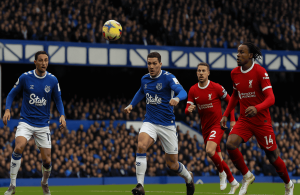What Color Is Best For Winning At online Game?

Introduction
Long a source of interest, the psychology of color has shaped everything from athletic performance to consumer behaviour. In the realm of strategic card games, color may also have a major impact on perception, decision-making, and even confidence. Players of blackjack, a game calling for a mix of skill, intuition, and probability, usually look for every conceivable edge to increase their likelihood of victory. While some may emphasize numerical and card counting-based tactics, others investigate psychological and contextual elements including color influence. But can a particular hue really improve blackjack performance or is it just a question of personal conviction?
Understanding how color affects decision-making calls for exploration of psychology, cultural connotations, and even small environmental factors. Colors inspire feelings and reactions that could slightly change a player’s attitude, hence influencing focus, confidence, and sense of control over the game. The slot gacor color spectrum could have interesting ideas on how to maximize performance at the blackjack table, from blue’s soothing influence to red’s reputation for dominance.
The Psychological Impact Of Colors
Extensive study has been done on how colors affect the human mind; studies indicate that various hues elicit particular psychological reactions. In high-pressure settings like strtegic card play or competitive gaming, these reactions might affect a player’s state of mind and hence their decision-making process.
For example, red is usually linked with confidence, power, and enthusiasm. Research indicates that athletes with red uniforms are seen as more aggressive and dominating, which can occasionally improve performance results. This impact could apply to blackjack as well; a player dressed in red or surrounded by red décor could feel more alert and forceful. On the other hand, red is connected to hasty decision-making, which could result in riskier decisions not necessarily advantageous in a game that calls for patience and careful actions.
Conversely, blue is recognized for its relaxing qualities. Many people link blue with confidence, stability, and intellect, which might let a blackjack player stay calm and concentrated. Wearing blue or playing in a blue-toned setting could help one keep clarity and logical decision-making in a game where emotional control is crucial. Unlike red, which could push a player toward daring, blue promotes a methodical and steady approach, maybe lowering irresponsible choices.
Black And Green: The Timeless Strategic Colors
Black has always been linked to elegance, power, and enigma. Many professional players like black clothing, thinking it radiates confidence and control. Black can also serve to generate a solemnity that could scare rivals. Darker hues have also been connected to concentration and discipline, two traits absolutely need for blackjack success. Wearing black or adding black accessories to one’s game could help to create a more calm presence, hence supporting the notion of controlling the speed of the game.
Often seen in vintage card table patterns, green represents balance, fortune, and development. Green in a playing area is thought to encourage focus and relaxation, so good for keeping a consistent attitude. Green is also linked to wealth in many cultures, which might unconsciously inspire a good attitude toward results of play. Green can assist players stay resilient even in trying times in the game by promoting a sense of serenity and stability.
White, Yellow, And Purple: Surprising Elements
When thinking about best blackjack performance, white, which stands for purity and clarity, might not be the first hue that springs to mind. Some players, however, think that simply lowering external distractions with a minimalist approach—including wearing white or playing in a bright, neutral environment—can improve concentration. For people who like a simple and rational approach to the game, White’s link with simplicity and mental clarity may be helpful.
Often connected with energy and hope, yellow may be a double-edged sword. Although it could motivate excitement and confidence, too much yellow could cause worry or restlessness, hence impairing decision-making under stress. Including mild yellow components without overloading their visual environment could help players wanting to keep a smart yet comfortable attitude.
Historically linked with knowledge and elegance, purple is a less often mentioned color in gaming psychology. Some say that purple enhances intuition and creativity, which can help one read patterns and make strategic choices. Although blackjack is mostly a game of logic, purple may gently promote a balance between rational analysis and gut feeling and intuition can influence some split-second decisions.
Superstitions And Personal Preferences
Apart from scientific justifications, color choices in blackjack usually reflect personal psychology and superstition. Based on past experiences, cultural beliefs, or anecdotal success tales, many players create personal connections with particular hues. Believing that their winning streaks are influenced by these decisions, some players may always sit at a green table or wear a fortunate red shirt.
Card games have traditionally been linked with superstition; color-based rituals are no exception. Players could avoid wearing certain colours because of imagined bad luck or choose particular hues depending on noteworthy prior triumphs. Although there is no conclusive evidence that one hue ensures winning over another, personal beliefs’ psychological boost can affect confidence and calmness, which are especially important in a game demanding strategic thinking and patience.
The Effect Of Color Saturation And Lighting
Apart from table hues and clothes, the general lighting and atmosphere of a gaming space might influence player performance. While cooler lighting with blue and green tones can promote a sense of tranquility, warm lighting with red and orange tones may generate an enthusiastic environment. Colors’ saturation and brightness also matter; bright, high-contrast hues could heighten awareness while soft tones might encourage rest. Knowing these elements, players may select options that fit their desired playing style, hence improving their general comfort and performance.
Conclusion
There is no clear solution to the issue of what hue is optimal for success at blackjack since individual psychology, cultural beliefs, and environmental elements all affect the impact of color. Research, meantime, indicates that some hues can affect mood, confidence, and decision-making, all of which are vital components of a game calling for strategic accuracy. Red may increase competition and bravery; blue might encourage a calm and systematic attitude; black emanates authority and attention; green promotes balance and concentration.
In the end, the ideal hue for success at blackjack is the one that fits a player’s attitude and playing technique. Color selections can subtly alter the game experience by means of scientifically supported psychological impacts or personal superstitions, so strengthening attention, confidence, and composure. Although color by itself won’t decide the result of a game, being aware of its influence could provide a little advantage in winning at the blackjack table.



